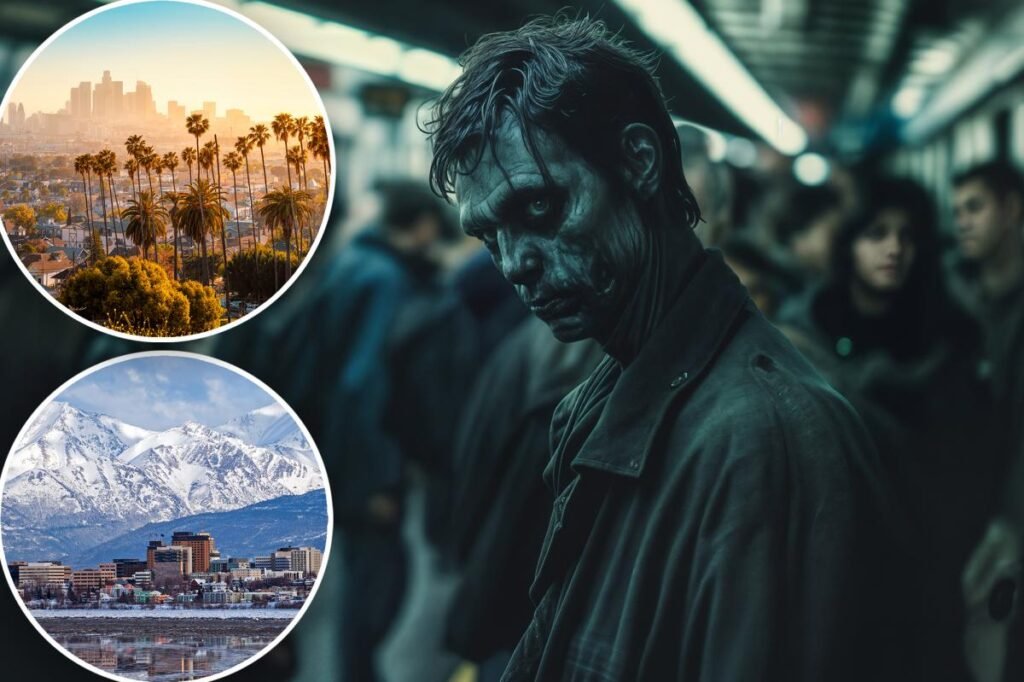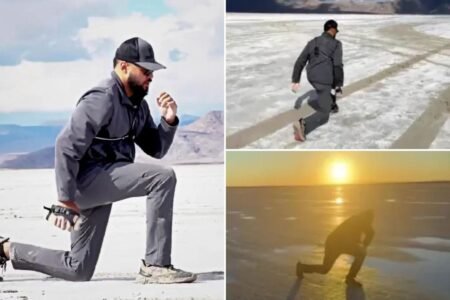Beware the Big Apple-pocalypse.
Heading to the hinterlands during a zombie apocalypse might seem like a survival flick cliche. However, experts agree that population centers are terrible places to be should the undead rise from their graves — with New Jersey topping the list of the least zombie-proof states, per a recent survey by gambling site CanadaCasino.
Meanwhile, the Empire State placed fifth on the countdown, proving that even our legions of gritty citizens wouldn’t prevent us from getting overrun in a New York minute.
How does one scientifically gauge such a seemingly far-fetched hypothetical? The experts at CanadaCasino had a pretty smart solution — they evaluated each state’s levels of zombie preparedness “scientifically” based on six key metrics: population density, percentage of water area, number of community hospitals, number of airports, number of fishing, hunting and trapping stores, and the number of military bases.
These figures were calculated per 100,000 people, and each state was given an apocalypse readiness score out of 10.
While a zombie invasion might sound like an idea relegated to the “Walking Dead,” more than one in ten Americans believe that this outcome is inevitable, per a 2023 study. Over half of those think that this outbreak will go down in the next 30 years.
The Garden State isn’t exactly an Eden when it comes to surviving zombification. With a readiness score of just 1.66, New Jersey ranked as the least prepared state, namely because it boasts the highest population density in the country, with a whopping 1,308 people per square mile.
Other factors in its susceptibility to infection include the fact that NJ has just 0.9 airports, 2.2 hunting stores, and 0.8 hospitals per 100,000 people.
Coming in second was Connecticut with a score of 2.15, while Massachusetts and Pennsylvania tied for third (2.57).
Meanwhile, California — which is the most populous US state with nearly 40,000,000 residents — came in fourth place (2.6), followed by New York in fifth (2.61).
Why would NY be such a lousy home base in an outbreak scenario? The survey pointed to the fact that the Empire State has just 0.8 community hospitals, 1.7 airports, and 3.0 hunting stores per 100,000 people.
However, they noted that the “state does have a decent amount of water (13.6%), which might come in handy if zombies can’t swim!”
Meanwhile, Alaska topped the list of states the people would want to hunker down at the end of the world.
The Last Frontier notched a readiness score of 7.89 out of ten, with CanadaCasino to their super low population density. “With just one person per square mile, its vast open space offers a clear advantage in avoiding infection,” they wrote.
This apocalypticist Valhalla also leads the way in terms of survival infrastructure, with the highest number of airports (78.5 per 100,000 people) — which are ideal for both escape and supply access — along with a strong military presence and abundant freshwater (14.2%).
Maine proved the second-best refuge from the infected, boasting a score of 5.31. CanadaCasino noted that the Pine Tree State’s strength lies in its “abundance of hunting and fishing stores (69.6 per 100,000 people) – the highest of all states.”
“With a decent number of airports and a substantial percentage of water coverage (12.8%), the state provides both escape options and access to natural resources,” they write, while espousing the virtues of this doomsday prepper’s paradise.
Rounding out the top three states for apocalypse survivability were South Dakota (5.17), Montana (4.93) and North Dakota (4.79), respectively.
The ten worst states to be in during a zombie apocalypse:
- New Jersey (1.66)
- Connecticut (2.15)
- Pennsylvania & Massachusetts (2.57)
- California (2.6)
- New York (2.61)
- Illinois (2.68)
- Arizona (2.71)
- Tennessee (2.73)
- Indiana (2.78)
- Ohio (2.81)
The top ten best places to be during a zombie apocalypse:
- Alaska (7.89)
- Maine (5.31)
- South Dakota (5.17)
- Montana (4.93)
- North Dakota (4.79)
- Wyoming (4.67)
- Hawaii (4.43)
- Michigan (4.12)
- Mississippi (4.1)
- Oklahoma and Louisiana (4.08)
Read the full article here












